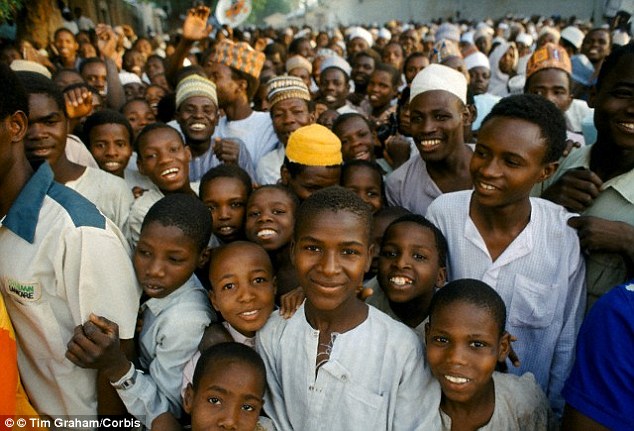-
Tips for becoming a good boxer - November 6, 2020
-
7 expert tips for making your hens night a memorable one - November 6, 2020
-
5 reasons to host your Christmas party on a cruise boat - November 6, 2020
-
What to do when you’re charged with a crime - November 6, 2020
-
Should you get one or multiple dogs? Here’s all you need to know - November 3, 2020
-
A Guide: How to Build Your Very Own Magic Mirror - February 14, 2019
-
Our Top Inspirational Baseball Stars - November 24, 2018
-
Five Tech Tools That Will Help You Turn Your Blog into a Business - November 24, 2018
-
How to Indulge on Vacation without Expanding Your Waist - November 9, 2018
-
5 Strategies for Businesses to Appeal to Today’s Increasingly Mobile-Crazed Customers - November 9, 2018
Global Population Could Top 13 Billion By 2100
The world’s population will increase to 9.7 billion in 2050 and 11.2 billion by 2100 from today’s 7.3 billion people, according to the latest calculations.
Advertisement
Still, it’s not the US that will contribute the most to the predicted growth in the world’s population.
The UN projection suggests there will not be an end to world population growth this century unless there are “unprecedented fertility declines” in parts of sub-Saharan Africa that are still experiencing rapid population growth.
By the turn of the century in the US the PSR is projected to decline from 4.0 to 1.9, Germany from 2.9 to 1.4, China from 7.1 to 1.4, Mexico from 8.7 to 1.4, and Bangladesh from 11.2 to 1.6.
According to the United Nations report, the steady rise in population will be fueled by the growth in Africa, which is projected to jump from 1.2 billion today to between 3.4 and 5.6 billion by 2100.
Earth is already a fairly crowded place, what with the current global population revolving around 7.3 billion people. “Even assuming a continued decline in fertility, given this high starting point, we should anticipate a continued rapid growth of the African population, which will roughly double in size between now and 2050”, he said. Asia, which is the most populous continent with 4.4 billion residing there, is set to peak at around 5.3 billion in the middle of the century, before falling to 4.9 billion by 2100.
The population in the United States is expected to increase by 40 percent – from 322 million to 450 million. Though Africa’s fertility rate has declined for a decade, it is dropping at only a quarter of the rate of decline seen in countries in Asia and Latin America during the 1970s. In a country where there are 182 million Nigerians, the UN projects the country will eventually lead to a population of 752 million in the next 85 years.
And most countries will experience an ageing population.
For example, Japan now has the lowest ratio at 2.1 meaning that for every 210 people aged 20-64, there are 100 people over 65, signalling an ageing population.
Only five countries are projected to have a PSR above 5.0 in 2100 and these include Niger, Somalia, Nigeria, Gambia and Angola. Europe’s total population is likely to experience a significant drop from 738 million people now to 646 million by 2100.
Niger is expected to have the highest PSR by the end of the century at 6.5.
Developing countries with young populations but lower fertility – such as China, Brazil and India – are expected to face the prospect of substantial population aging before the end of the century.
Advertisement
The UN said: “The concentration of population growth in the poorest countries will make it harder for those governments to eradicate poverty and inequality, combat hunger and malnutrition, expand education enrolment and health systems, improve the provisions of basic services and implement other elements of a sustainable development agenda to ensure that no-one is left behind”.




























